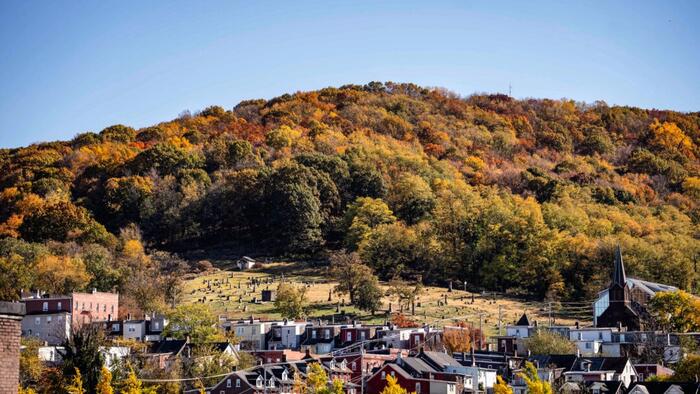Northampton County, nestled in eastern Pennsylvania, is increasingly recognized as a crucial battleground for the 2024 presidential election. Historically, it has transitioned from being a solidly Democratic region to a swing area, reflecting broader trends in American politics. Notably, the county flipped from blue to red under Donald Trump in 2016 before reverting to blue for Joe Biden in 2020. As a bellwether, Northampton County’s shifting political landscape reveals much about voter sentiments and demographics, making it a focal point for candidates this electoral season, particularly with significant figures such as Donald Trump and House Speaker Mike Johnson making frequent visits.
The county, home to the now-defunct Bethlehem Steel plant—once a leader in steel production—has experienced profound economic transformations indicative of broader national changes. Economic struggles after the 1990s, primarily due to industrial offshoring, led to a decline for many workers in the area. However, the community has rebounded by diversifying its economy beyond traditional manufacturing. New industries including healthcare, life sciences, and tourism have gained prominence, driven by an influx of new residents from urban centers like New York City and Philadelphia. This demographic shift has contributed to a narrowing of the gap between registered Democrats and Republicans in voter registration statistics, highlighting evolving political dynamics.
The changing population has led to a political landscape that is increasingly diverse, with a growing proportion of moderate Republicans and independents. GOP Chair Glenn Geissinger notes that Trump’s populist message has resonated with working-class voters, enabling his party to gain traction among traditionally Democratic constituents. Conversely, sentiments among voters have shifted, as many are wary of Vice President Kamala Harris’s ability to replicate Biden’s previous appeal to those blue-collar voters. Events leading up to the election indicate that the dynamics in Northampton—where urban areas lean Democratic and rural regions remain Republican—are reflective of broader class and geographical divides within Pennsylvania and beyond.
Demographics in Northampton reveal a predominantly white community, but with a notable and growing Hispanic population, particularly among Puerto Rican heritage groups. The region’s increasing diversity not only enriches its cultural fabric but also influences electoral preferences amidst changing attitudes toward national issues. As sentiments regarding voting rights, healthcare, and economic stability emerge as pivotal topics in the election, local voters exhibit a heightened awareness of the significance of their involvement in a closely contested state. The local environment fosters dialogue around political unity and empathy, reflecting a desire among constituents to address economic needs and societal concerns within their communities.
As the election approaches, concerns about the outcomes loom large among residents. Many express fears over potential impacts on social safety nets like Social Security under a potential Trump presidency, contrasting them with aspirations for a progressive economic agenda from Harris. Business owners and local citizens alike voice optimism for their communities yet remain mindful of the national climate’s influence on their lives. The discussions surrounding economic stability, individual rights, and community resilience serve as a microcosm for the debates occurring nationally, revealing how local issues intersect with broader political narratives.
Young voters at local universities, particularly in Lehigh Valley, reflect diverse perspectives about the election, with many eager to make their voices heard for the first time. They exhibit tendencies to seek candidates who resonate with their values, yearning for unity and relatability. However, frustrations over the candidate choices highlight a growing desire for an authentic connection between representatives and their constituents. This generational divide in expectations underscores the shifting political landscape in Northampton and suggests a potential transformation in voter priorities as they seek representatives who genuinely align with their experiences and aspirations for the future.

